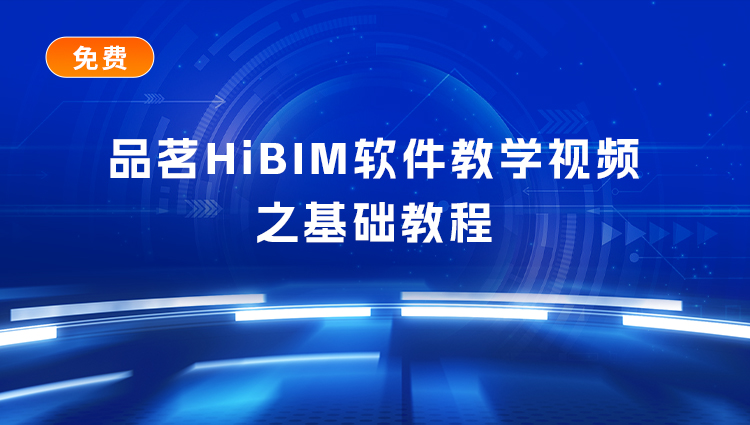* 主体类型
* 企业名称
* 信用代码
* 所在行业
* 企业规模
* 所在职位
* 姓名
* 所在行业
* 学历
* 工作性质
请先选择行业
您还可以选择以下福利:
行业福利,领完即止!

下载app免费领取会员



前言
Preface
当城市化进程让乡村逐渐成为城市的另一种变体,乡村失去了乡愁,同时又未能获得足够的优势与反哺。面对日益加剧的农村人口老龄化、空心化等现象,如何通过设计重新激发乡村活力并向城市人展现乡间生活魅力,是近些年社会上热议的话题。
When the urbanization process makes the rural areas gradually become another variant of the city, the countryside loses its nostalgia and at the same time fails to get enough advantages and supports. Facing the increasing aging and hollowing out of the rural population, how to revitalize the villages through design and show the charm of countryside life to the urban people has been the hot social issues in recent years.

▲“母亲住宅”街景 ©朱雨蒙
▲Street view outside the “Mother’s House” ©Zhu Yumeng
实际上,随着农村基础设施建设日趋完善,且不再受制于物流不畅和信息不通,如今的乡村有机会与城市互为补充,并连接成一体。当在城市打拼的年轻人想要额外购置住房就近赡养父母,并希望闲暇时能够从繁忙的效率、指标、任务中抽离,感受大家庭的精神慰藉时,近郊便成为了最好的选择。
In fact, with better infrastructure and no longer constrained by the disadvantages of poor logistics and information, the countryside today has the opportunity to complement and connect with the city. Young people working in the city want to purchase additional housing to support their parents nearby. They need to take a break from their busy schedules of efficiency, targets, and tasks in their spare time, and feel the warmth of the family, the suburbs become the best choice for them.

▲乡村新生活下的居住构想 ©朱雨蒙
▲Residential concepts for a new life in the countryside ©Zhu Yumeng
不远的未来,乡村将具备流动、多元、互联的特质,提供城市里无法获得的空间体验和生活方式。新的乡村能够吸引新的乡村人,并带来新的社区形态。“母亲住宅”项目正是在此契机下诞生的一个助力乡村振兴的独立实验样本。建筑师重构了乡间现代家庭的生活场景,为房山西营村与北京城区建立新联系提供了一份答案。
In the near future, the countryside will be mobile, perse and interconnected, offering spatial experiences and lifestyles not available in cities. New villages will attract new villagers and bring new forms of community. The “Mother’s House” project was born in this context as an independent experimental sample to help revitalize the villages. The architects reconstructed the living scene of a modern family in the countryside, and provided an answer for Xiying Village in Fangshan District to establish a new connection with the urban area of Beijing.

▲“母亲住宅”轴测爆炸图 ©CPLUS
▲Exploded axonometric view of the “Mother’s House” ©CPLUS


▲手工模型 ©CPLUS
▲Hand model ©CPLUS
母亲住宅
Mother’s House
走向乡村新生活
Towards a New Rural Life
一座带庭院的独立住宅,寄托了大量中国城市家庭对理想居住的憧憬。尽管今天高密度的城市环境已难以向居民提供独属的院落空间,在近郊广袤的土地上却依旧孕育着无限的可能性。
An independent house with a courtyard is the vision of ideal living for a vast number of Chinese city families. Although today’s high-density urban environments can no longer provide residents with exclusive courtyard spaces, the vast lands in the suburbs still offer unlimited possibilities.

▲暮色下的“母亲住宅” ©刘晶
▲“Mother’s House” in the twilight ©Liu Jing
北京西南六环外坡峰岭脚下,散落着成片的村庄,“母亲住宅”所在的西营村就坐落其间。按照最初设想,这座院子是为退休老人设计的,到了周末也可以成为祖孙三代团聚的场所。为向抚育生命的母亲致敬,特以“母亲住宅”命名。
At the foot of Pofengling Scenic Spot, outside the Sixth Ring Road in the southwest of Beijing, there are scattered villages, and Xiying Village, where the “Mother’s House” located, is situated among them. This courtyard, originally designed for retired seniors, can also serve as a gathering place for three generations on weekends. And it was especially named “Mother’s House” in honor of the women who nurture life.

▲方格网街巷 ©朱雨蒙
▲Grid road network ©Zhu Yumeng
村内房屋大多坐北朝南,每块宅基地边界相对规整,密集的农宅和方格型路网勾勒出纵横交错的街巷肌理。“母亲住宅”主入口临着基地东侧的主街,南、北方向皆面朝小巷,西侧院墙与邻居共用。身处实地,建筑师开始在脑海中架构理想中的乡村居住场景,思考什么样的建筑能够符合这一想象,以及未来这里的生活又将发生什么样的改变……
Most of the houses in the village face the south, and the boundaries of each homestead are relatively regular. The dense farmhouses and grid road network outline the pattern of streets and alleys. The main entrance to the “Mother’s House” is located on the east side of the site, fronting the main street, with both the north and south sides face the alley, and the west courtyard wall is shared with a neighbor. Under such actual site conditions, the architects began to structure the ideal residential scene of the countryside, thinking about what kind of buildings could fit into this imagination and how life here would change in the future...

▲住宅东侧沿街立面 ©朱雨蒙
▲East elevation of the house ©Zhu Yumeng
内与外相生
Inside and Outside
住宅不仅仅是居住功能的载体,也是文化的一种延伸。住宅的“内”与“外”是中国传统建筑文化里重要的一种关系,就像中国古代哲学中的“阴”与“阳”一样彼此依存、互相促进、不可分离。“外”并不是“内”的附属,两者间是相互为用的关系,甚至设计“内”是为了实现“外”。“母亲住宅”建筑与庭院的占地比例接近1:1,通过凹凸的图底关系,展现了两者间的动态平衡。
Housing is not only a carrier of residential functions, but also an extension of culture. The “Inside” and “Outside” of a residence is an important relationship in traditional Chinese architectural culture, just like the “Yin” and “Yang” in ancient Chinese philosophy, which are interdependent, mutually reinforcing, and inseparable. The “Outside” is not an adjunct to the “Inside”, but the two are mutually beneficial, and even the “Inside” is designed to realize the “Outside”. In the “Mother’s House”, The area ratio between the building and the courtyard is close to 1:1, and the dynamic balance between the two is clarified through the concave and convex figure-ground relationship.

▲空间生成示意图 ©CPLUS
▲Schematic diagram of spatial generation ©CPLUS
入户门外檐下的灰空间正处于宅基地中央,是整个院落的视觉中心和象征家庭凝聚力的精神场域。这处灰空间让居住者在一年四季里的日常活动有了更多向室外延伸的可能性,夏夜可乘风纳凉,冬日可在雪中围炉煮茶,逢重要节日,全家人还能在此举杯庆祝。
The gray space beneath the eaves of the entry door lies right in the center of the homestead, constituting the visual center of the entire courtyard and the spiritual field symbolizing family cohesion. This gray space enables residents to extend their daily activities to the outdoors throughout the year, enjoying the breeze on summer nights, making tea in the snow on winter days, and celebrating important holidays with the whole family.

▲檐下灰空间 ©刘晶
▲Gray space under the eaves ©Liu Jing
南立面上,各主要房间的窗口如同取景器一样将庭院之中的风景引入室内,淡化了“内”与“外”的界限。而内向的院落既是人与自然互动的场所,又能保护室内私密,就像一个超脱于外在喧嚣的“内向宇宙”。
On the south elevation, the windows of the main rooms act as viewfinders to bring the scenery of the courtyard into the interior, while blurring the boundary between “Inside” and “Outside”. The inward-looking courtyard is a place for people interaction with nature and protects the privacy of the interior, like an “Introverted Universe” that is free from the hustle and bustle of the outside world.

▲住宅南立面近景 ©朱雨蒙
▲South elevation of the house ©Zhu Yumeng

▲内向的庭院空间 ©朱雨蒙
▲Introverted courtyard space ©Zhu Yumeng
水平与垂直同构
Horizontal and Vertical
在建筑空间的整体设计上,建筑师借鉴亚洲传统空间智慧拓展并延伸了水平方向上的空间层次,同时围绕通高的中庭创造出连续且丰富的室内竖向体验。
In the overall design of the interior space, the architects drew on traditional Asian spatial wisdom to expand the horizontal spatial hierarchy, and at the same time create a continuous and rich indoor vertical experience around the full-height atrium.

▲“母亲住宅”剖透视图 ©CPLUS
▲Sectional perspective view of the “Mother’s House” ©CPLUS


▲通高的起居空间 ©朱雨蒙
▲The full-height living space ©Zhu Yumeng
“母亲之家”平面布局由东向西分为三段。靠近主街的厨房及餐厅单元相对热闹,从厨房窗口可以随时观察到院子里的情况。通高的中庭空间位于中段,作为起居活动区连接着各个房间。西侧楼上、楼下各有一组卧室和卫生间单元,安静并确保隐私。二层东侧是一个书房,未来住户也可以自定义使用场景,灵活置换成其他活动空间或者卧室。
The floor plan of the “Mother’s House” is pided into three sections from east to west. The kitchen and dining room units near the main street are relatively lively, and the yard can be readily observed from the kitchen window. The full-height atrium space is located in the middle section and serves as a living area. The west side has a set of bedrooms and bathrooms upstairs and downstairs for quiet and privacy. On the east side of the second floor, there is a study, which can be customized as an activity space or even a bedroom in the future.

▲餐厅一隅 ©朱雨蒙
▲Corner of the dining space ©Zhu Yumeng

▲二层书房 ©朱雨蒙
▲Study on the second floor ©Zhu Yumeng

▲二层次卫 ©朱雨蒙
▲Secondary bathroom ©Zhu Yumeng

▲二层次卧 ©朱雨蒙
▲Secondary bedroom ©Zhu Yumeng
由于是献给母亲的住宅,首层功能布置即可覆盖老年人全部的日常生活需求,且室内外不设台阶,高差全部用坡道解决,保障了高龄使用者的活动范围。
As the house is dedicated to mothers, the functional arrangement of the first floor can cover all the daily needs of the elderly. There are no steps indoors and outdoors, and the difference in heights is solved by ramps, so that the range of activities for senior users is guaranteed.

▲首层老人的卧室 ©刘晶
▲Bedroom for the elderly on the first floor ©Liu Jing
设计还特意开放出围绕中庭的竖向交通空间,不同角度的视线在不经意间产生交汇,使家庭成员的交流更为立体和富有趣味。此外,南立面透明玻璃外墙最大程度延伸了空间纵深,人坐在中庭就能看到院子与天空。面积100多平米的住宅既实现了功能的多样性,又加深了家人的羁绊。
The design also opens up the vertical circulation spaces around the atrium, so that the sight lines from different angles can meet, making the communication among family members more three-dimensional and interesting. In addition, the transparent glass wall on the south facade maximizes the depth of space, allowing people to see the courtyard and the sky while sitting in the atrium. With an area of more than 100 square meters, this house not only realizes the persity of functions, but also deepens the bond between family members.

▲“L”字形走廊 ©朱雨蒙
▲L-shaped corridor ©Zhu Yumeng
“V”字形屋顶与光线互动
V-shaped Roof and Light
出于对尺度和光线的双重考量,“母亲住宅”的屋顶呈“V”字形,屋脊压低,东、西两翼向外展开。反向坡屋顶的做法在保证二楼房间舒适度的同时,又避免了中庭过高而造成的尺度失衡和空间冗余。从街道视角看,“V”字形屋顶勾勒出轻巧灵动的天际线轮廓,压低的部分则为北侧邻宅尽可能留出视线和采光通道,避免了对邻居的干扰。
Out of consideration for both scale and light, the roof of the “Mother’s House” is in the shape of a “V”, with the ridge lowered and outwardly spreading east and west wings. The reverse sloping roof ensures the comfort of the rooms on the second floor while avoiding the scale imbalance and spatial redundancy caused by the high atrium. From the street viewpoint, the V-shaped roof outlines a light and dynamic skyline, and the lowered portion of the roof leaves as much sight and light as possible for the next door house on the north side, avoiding interference with the neighbors.

▲“V”字形屋顶 ©朱雨蒙
▲V-shaped roof ©Zhu Yumeng
东、西山墙上的凸窗增加了立面的层次和趣味,并连同中庭两道隔墙上的高窗洞形成了“光的通道”。一天中随时间推移而变化的光线沿天花板斜面直达起居空间,让整个住宅从早到晚的活动都充满自然生机。
Bay windows on the east and west gables add layers and interest to the facade and, together with high window openings in the two partitions of the atrium, create a pathway for light. The sunlight that changes over the course of the day travels along the sloping ceilings right into the living spaces, filling the entire home with natural life from morning to evening activities.

▲光的通道 ©朱雨蒙
▲Channel of light ©Zhu Yumeng
材质与色彩协调
Material and Color
建筑室内外的主要材质色彩皆为大地色系,与乡村环境融为一体。砖、石材、木材、金属、织物以及涂料等各种材料,在明暗光线中交织出不同的温度与质感,带给人自然、质朴、温馨、舒适的感受。
The main colors of the interior and exterior of the building are all earth tones, blending in with the rural environment. Various materials such as brick, stone, wood, metal, fabrics and paints interweave different temperatures and textures in the light and darkness, bringing people a natural, rustic, warm and comfortable feeling.


▲楼梯间转角处的玻璃砖墙与黄铜扶手 ©朱雨蒙
▲Glass brick wall and bronze handrail at the corner of the stairwell ©Zhu Yumeng
设计图纸
Design Drawings

▲总平面图
▲General Layout

▲首层平面图
▲First Floor Plan

▲二层平面图
▲Second Floor Plan
项目信息
设计方:CPLUS
创始合伙人:程艳春、李楠
主持建筑师:程艳春
设计团队:薄忱、刘晓光、周珂帆
项目类型:住宅
项目状态:已建成
时间:2023年04月-11月
地点:中国,北京
建筑面积:144.2平方米
摄影:刘晶、朱雨蒙
视频:酿影像工作室
Project Details
Design Firm: CPLUS
Founding Partners: Cheng Yanchun, Li Nan
Architect in Charge: Cheng Yanchun
Project Team: Bo Chen, Liu Xiaoguang, Zhou Kefan
Program: Residential
Status: Built
Dates: April-November, 2023
Location: Beijing, China
Area: 144.2 sq.m.
Photographs: Liu Jing, Zhu Yumeng
Video: Niang Film Studio
来源:本文由CPLUS提供稿件,所有著作权归属CPLUS所有。
本文版权归腿腿教学网及原创作者所有,未经授权,谢绝转载。

- 建筑赏析|谧境幽蓝盎然新生|上海绿城·春晓园
- 建筑赏析|逃离都市喧嚣,把别墅打造成婚礼、派对、度假的私密空间
- BIM建筑|绍兴天地:芯片厂变身城市商业客厅 / Kokaistudios + AICO
- 建筑赏析|泳池也疯狂!里斯本Tejo环形泳池引领水上新风尚
- 建筑赏析|广州畿·云瑶度假酒店:line+在大湾区山谷间,重塑野奢栖居理想地
- BIM建筑|P.art Group画廊空间 / 超级理想建筑工作室
- BIM建筑|SUPAW HUB:“小镇”里的休闲市集 / Pure & Wild Studio 朴野设计
- BIM建筑|朔特拉艺术展览中心 / Ho Khue Architects
- BIM建筑|义乌宗泽36班幼儿园 / 九米设计
- BIM建筑|NAN+和作新作:南京南部新城步行桥和车行桥







































